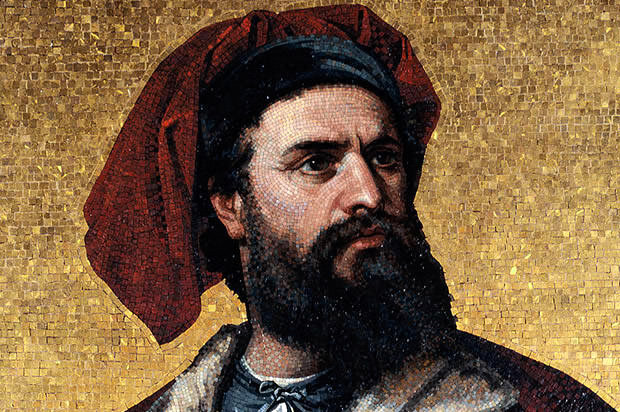The House of Marco Polo
The house in which Marco Polo lived for the last 25 years of his life, until January 1324, was in the quarter of san Giovanni Crisostomo
Starting one of my Photo walk in Venice from the Rialto’s bridge, or from the near Campo San Bartolomio, with the statue of the playwright Carlo Goldoni right in the middle, we often pass through the “Corte del Milion”, where we can find what remains of the house of Marco Polo.
The travels of Marco Polo
The empire of Venice, the only colonial empire of the Middle Ages, after Marco Polo's travels to the Far East, became the link between the court of the Kublay, the Great Khan of the Mongols, in distant Cathay, and Western countries. It is not surprising that Nicolò Polo, father of Marco, and his brother Matteo, embark on an adventure in the Caucasus and Persia starting from the counter of Soldaja in Crimea where they were trading precious stones. They will return to Venice after ten years of a long and perilous journey, and for the next travel they took along Marco, only fifteen years old: he had just lost his mother. This second expedition lasted twenty-four years and out of this journey, Marco Polo wrote the Book of Wonders. This work, known in Venice as “The Million” from the colloquial nickname of its author, was undoubtedly the most copied, the most printed and the most read of all travel books.
Marco Polo in a mosaic
When the three members of the Polo family – Nicolò, Matteo, and Marco – returned to Venice after been halfway around the world, they knocked at the door of their house, and to the maid who peeped out from a window asking: “Chi xe?” (Who is there?), calmly replied: “I paroni” (The masters), as if they had just came back from a stroll to Rialto.
The house in the quarter of san Giovanni Crisostomo, in which Marco Polo lived for the last 25 years of his life, until January 1324, was purchased by his father Nicolò and the uncle Matteo with part of the profits of their voyage while Marco was a prisoner in Genoa. That house unfortunately burnt down in 1596. All that remains is a great archway with a beautiful Veneto-Romanesque arched lintel and on the foundations of this big house, in 1678, the actual Malibran theatre was constructed.
The beautiful Veneto-Romanesque arched lintel under the house of Marco Polo


